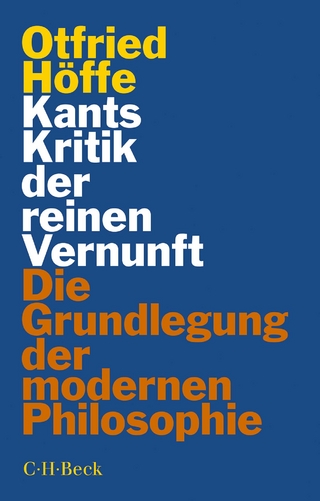
Reality’s Fugue
Pennsylvania State University Press (Verlag)
978-0-271-07931-8 (ISBN)
- Titel z.Zt. nicht lieferbar
- Versandkostenfrei innerhalb Deutschlands
- Auch auf Rechnung
- Verfügbarkeit in der Filiale vor Ort prüfen
- Artikel merken
Science, religion, philosophy: these three categories of thought have organized humankind’s search for meaning from time immemorial. Reality’s Fugue presents a compelling case that these ways of understanding, often seen as competing, are part of a larger puzzle that cannot be rendered by one account of reality alone.
This book begins with an overview of the concept of reality and the philosophical difficulties associated with attempts to account for it through any single worldview. By clarifying the differences among first-person, third-person, and dualist understandings of reality, F. Samuel Brainard repurposes the three predominant ways of making sense of those differences: exclusionist (only one worldview can be right), inclusivist (viewing other worldviews through the lens of one in order to incorporate them all, and thus distorting them), and pluralist or relativist (holding that there are no universals, and truth is relative). His alternative mode of understanding uses Douglas Hofstadter’s metaphor of a musical fugue that allows different “voices” and “melodies” of worldviews to coexist in counterpoint and conversation, while each remains distinct, with none privileged above the others. Approaching reality in this way, Brainard argues, opens up the possibility for a multivoiced perspective that can overcome the skeptical challenges that metaphysical positions face.
Engagingly argued by a lifelong scholar of philosophy and global religions, this edifying and accessible exploration of the nature of reality addresses deeply meaningful questions about belief, reconciliation, and being.
F. Samuel Brainard is an independent scholar of Asian and Western religion and philosophy. He is the author of Reality and Mystical Experience, also published by Penn State University Press.
Contents
List of Illustrations
Preface
Introduction
PART ONE: What Is Real?
The Predicament
•Of Schizophrenia, Religions, and Conflicting Views of Reality
•Science’s Limitations
•Three Usual Ways to Resolve Conflicting Views of Reality
•Fugues and a Fourth Option
•Another Kind of Fugue
•Summary
Two Views of Reality
•The Need for New Philosophical Tools
•First-Person versus Third-Person Views
•The Two Views before and after René Descartes
•The Concept of “Reality”
•Three Accounts of Reality
•Summary
PART TWO: Three Themes
Universals and Particulars
•The Third-Person View Divides into Universals and Particulars
•Some Historical Roots of the Universal-Particular Distinction
•Universals and Particulars as Principles of Nature
•Universals and Particulars Have an Ambiguous Relationship
•Universals, Particulars, and Accounts of Reality
•Summary
Hinduism and the Third-Person View
•Why Hinduism?
•Brahman
•The Everyday World
•Enlightenment
•The Five Cloaks of Brahman
•The Different Philosophical Schools
•Summary with Strengths and Weaknesses of this Strategy
Awareness and Its Objects
•First-Person Accounts of Reality
•The Cartesian Roots of Western First-Person Philosophy
•A Phenomenological Illustration of First-Person Philosophy
•Awareness and Conscious Awareness
•Summary
Buddhism and the First-Person View
•Why Buddhism?
•The Buddha and the Four Nobel Truths
•The Nature of Reality
•Universals as Arising through Causal Interaction
•Enlightenment and “Presence”
•History after the Buddha
•Summary with Strengths and Weaknesses of this Strategy
The Dualism of Everyday Reality
•Dualist Accounts of Reality
•Reality as What Is “Public”
•Reality as What Is “Present”
•Phusis versus Techne: The Natural versus the Artificial
•Individual and Collective Agency
•Summary
Western Theism and the Dualist View
•Everyday Dualism versus a Higher Truth
•Polytheism
•From Polytheism to Monotheism
•Philosophical Influences
•Human Nature and Life Goals
•Summary with Strengths and Weaknesses of this Strategy
PART THREE: Reality As Fugue
Introduction to Part Three
Awareness’ Two Roles
•Who Are We Really?
•Awareness’ Two Roles
•Sitting in a Café
•The Consciousness Problem
•Summary
Artifacts of Awareness
•A Definition for Awareness
•A Mosaic of Groups: CORs, Classes, and CODs
•Descartes Reconsidered
•Our Concept of Self in Space and Time
•Summary
Physical Reality
•Reality as Emergent
•Mathematics and the Behavior of the Universe
•Two Pictures of Physical Reality
•Quantum Strangeness
•Schrödinger's Cat
•Summary
Religions Revisited
•Philosophy, Religion, and Mystery
•A Riddle Blocks Our Way
•At Home in the Everyday Puzzle of Reality
•Gateless Gates
•Moving On
Postscript 1: Scale as a Dimension of Reality
Postscript 2: A Definition for Truth
Acknowledgements
Terms Defined in this Book
Glossary of Hindu and Buddhist Terms
Notes
References
| Erscheinungsdatum | 29.01.2018 |
|---|---|
| Zusatzinfo | 8 Halftones, black and white |
| Verlagsort | University Park |
| Sprache | englisch |
| Maße | 152 x 229 mm |
| Gewicht | 408 g |
| Themenwelt | Geisteswissenschaften ► Philosophie ► Erkenntnistheorie / Wissenschaftstheorie |
| Geisteswissenschaften ► Philosophie ► Östliche Philosophie | |
| Geisteswissenschaften ► Religion / Theologie | |
| Sozialwissenschaften ► Soziologie | |
| ISBN-10 | 0-271-07931-2 / 0271079312 |
| ISBN-13 | 978-0-271-07931-8 / 9780271079318 |
| Zustand | Neuware |
| Haben Sie eine Frage zum Produkt? |
aus dem Bereich

![Was heißt Denken?. Vorlesung Wintersemester 1951/52. [Was bedeutet das alles?] - Martin Heidegger](/media/113619842)
